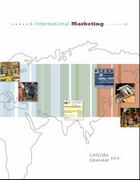Question
Objective: You have to show that you are able to use linear regression techniques and interpret the results that you obtain, such as coefficient estimates,
Objective: You have to show that you are able to use linear regression techniques and interpret the results that you obtain, such as coefficient estimates, r-squared, adjusted r-squared, ANOVA table, p-value, standard error, etc.
Please use the "concrete_train" dataset to fit a regression model. Make sure that you:
- Interpret your findings (coefficient estimates, r-squared, adjusted r-squared, ANOVA table, p-value, standard error, etc.)
- Perform variable selection (backward)
- Make model comparison using the proper metric (it might be r-squared or adjusted r-squared but justify why you use one over the other)
- Check the correlation matrix (and comment on it)
- Run regression diagnostic (to see any transformation is needed or any assumption is violated)
After deciding on the best model (it may vary from person to person), use that regression model to predict the strength of the concrete in "concrete_test" dataset. Then, please upload the predictions to the canvas (project 2 section) so that I can evaluate how good the predictions are.
Data source
The data, collected by Yeh, consists of 1030 observations with 9 quantitative variables: cement, age, blast furnace slag, fly ash, water, superplasticizer, coarse aggregate, fine aggregate, and compressive strength. The description of each of these variables is given in Table 1. Note that I split the data into two parts - train set (803 observations) and test set (200 observations). Therefore, you are going to work with the training dataset to make a regression model and use it to predict the strength of the concretes in the "concrete_test" data.
Table 2. Definition of variables
Variable name
Definition
Cement
ASTM type I, Portland Cement
Slag
Supplied by a local steel plant in Taiwan
Fly Ash
Manufactured as a byproduct by a power plant
Water
Normal Tap water
Superplasticizer
ASTM C494 type G, to obtain slump between 125mm to 175 mm.
Coarse Aggregate
Crushed natural rock with a 10-mm maximum size.
Fine Aggregate
Washed, natural river sand with a fineness module of 3.0.
Age
Number of Days
Compressive strength
Experimental results of destructive testing on 15-cm cylinders
Step by Step Solution
There are 3 Steps involved in it
Step: 1

Get Instant Access to Expert-Tailored Solutions
See step-by-step solutions with expert insights and AI powered tools for academic success
Step: 2

Step: 3

Ace Your Homework with AI
Get the answers you need in no time with our AI-driven, step-by-step assistance
Get Started


